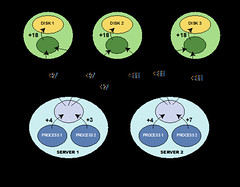
StubHub is an interesting architecture to take a look at because, as market makers for tickets, they are in a different business than we normally get to consider.
StubHub is surprisingly large, growing at 20% a year, serving 800K complex pages per hour, selling 5 million tickets per year, and handling 2 million API calls per hour.
And the ticket space is surprisingly rich in complexity. StubHub's traffic is tricky. It's bursty, centering around unpredictable game outcomes, events, schedules, and seasons. There’s a lot of money involved. There are a lot of different actors involved. There are a lot of complex business processes involved. And StubHub has several complementary but very different parts of their business: they have an ad server component serving ads to sites like ESPN, a rich interactive UI, and a real-time ticket market component.
Most interesting to me is how StubHub is bringing into the digital realm the once quintessentially high-touch physical world of tickets, point-of-sale systems, FedEx delivery, buyers and sellers, and money. They are making it happen with deep electronic integration into organizations (like Major League Baseball) and a Lifecycle Bus that moves complex business processes out of the application space.
It's an interesting problem made more complex by having to move forward while dealing with legacy systems built when getting business building features out the door was the priority. Let's see how StubHub makes it all work...
Click to read more ...
 Wednesday, July 11, 2012 at 9:15AM
Wednesday, July 11, 2012 at 9:15AM 






















